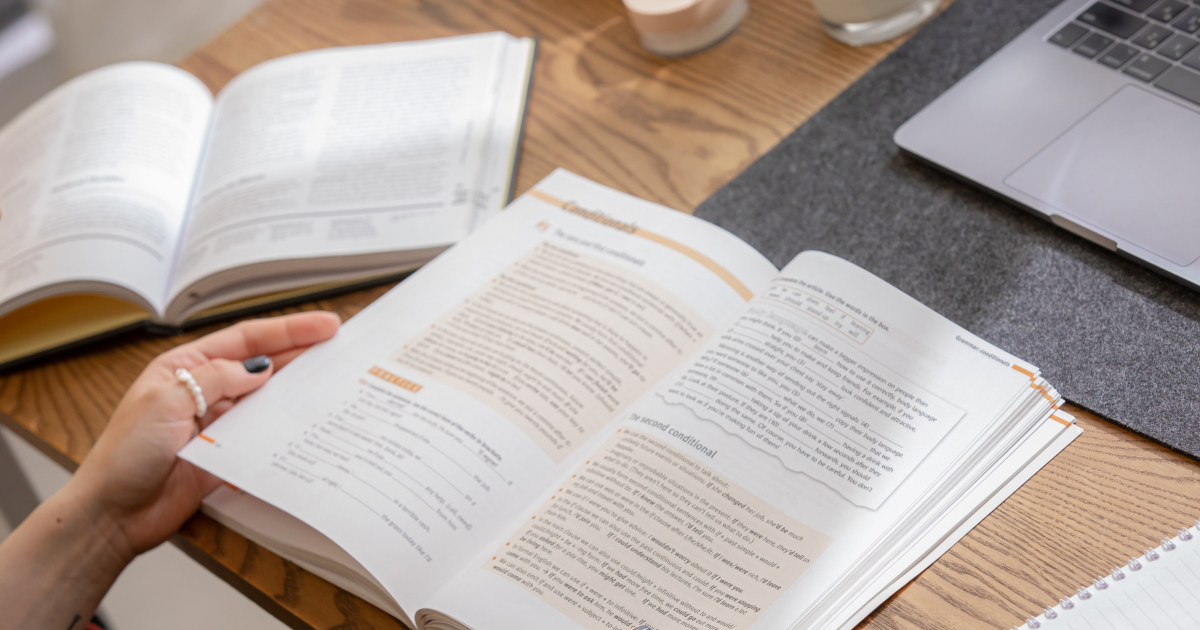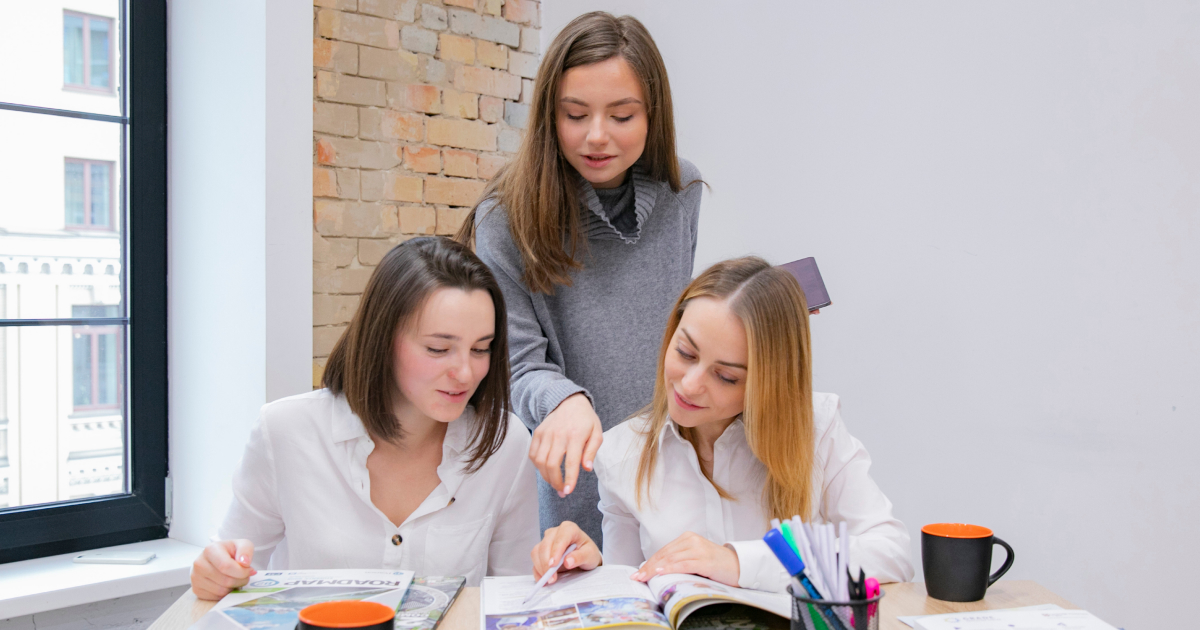How to correct students’ mistakes in speaking
- Speaking
- Pronunciation
- Activities
- Tips & Strategies
- Methodology

22.08.2023
It’s likely that you have never heard of Dr. B. Kumaravadivelu, however, chances are you are already familiar with some of his ideas, if not in theory, then in practice.
The thing is that the last popular approaches to teaching languages, such as communicative language teaching (CLT), task-based language teaching (TBLT), and content language integrated learning (CLIL), are all at least 20 years old.
Contrary to the most popular approaches, Kumaravadivelu proposed postmethod pedagogy in 1994. Kumaravadivelu’s Macro-Strategic Framework as well as Allwright’s Exploratory Practice, Stern’s Three–Dimensional Framework, and Brown’s Principled Approach came about in response to the need for a method-free, most effective approach to teaching English.
In his proposal for micro-strategies in ELT classrooms, Kumaravadivelu sees postmethod pedagogy as a three-dimensional system with three pedagogic parameters:
Since the beginning of the first attempts to follow post-method prescriptions, people have become more interested in contexts in which languages are taught (needs assessments, language acquisition for specific reasons, sociocultural approaches to learning motivation, etc.).
In this article we are going to talk about the main advantages of post-method (also known as post–CLT) pedagogy and some practical ways of using this new theory for the benefit of your lessons.

As we have already mentioned, the theory of ELT has been going through major changes, and that is exactly what Kumaravadivelu is interested in.
He researches changes that have occurred in language teaching and states that the methods have evolved from language-centered methods to learner-centered.
Now, though, we are facing another important change: the education process becoming learning-centered.
Therefore, while method may be defined as a set of theoretical rules and principles directed at teachers, post-method is a set of rules constructed by the teacher and based on their prior and experiential knowledge.
Simply put, according to Kumaravadivelu, post-method implies practitioners constructing classroom-oriented theories, while method can be defined as theorizers constructing knowledge-oriented ones.
That is why we may state that post-method appeared primarily to overcome limitations imposed by the method and justify the difference between the expectations that the method sets and the reality that teachers get by applying the same set of rules in spaces that highly differ in their experiences, backgrounds, traditions etc.
Want to know more about ELT trends?
Post-method pedagogy is also defined by its three main characteristics: particularity, practicality, and possibility.
Let’s look closer at each of them.
Particularity means that teachers have to develop sensitivity to their students as well as their backgrounds, needs and general context in which studying takes place.
For instance, Kumaravadivelu lists some of the negative impacts that “trendy” language teaching techniques imported from so-called developed countries (mostly the US. and UK.) have had in other regions of the world:
“All education, like all politics, is local. Ignoring local needs means ignoring real-world situations”.
To support his idea, he particularly refers to the global promotion of Communicative Language Teaching (CLT). He claims that learning how to chit-chat about movies, traveling or sports turned out to be not very effective in some parts of the non-English speaking world where students’ objective was focusing on grammar to get into the university or learning how to read in order to understand some manuals.

Use flashcards effectively in your teaching practice
Learn how with our courseOther scientists agree with Kumaravadivelu up to the point of referring to CLT as “naive ethnocentrism”.
Therefore, the main idea is absolutely clear and was perfectly formulated by Shamim:
“Promoting CLT where it was not appropriate could make the teacher terribly exhausted and the learners put up psychological barriers to learning”.
Some educators even emphasize situations where students from Sri Lanka are supposed to discuss whether they want or don’t want to buy certain things that they simply can not afford in real life.
Basically, the rule of particularity encourages teachers to critically analyze theory if they feel like it’s not appropriate for their students’ environment and not be afraid to actively look for the most practical solutions even if they don’t strictly follow the advice from the teacher training books.

The followers of post-method theory refuse to take the method as a set of rules they must obey under any circumstances.
Kumaravadivelu insists that teachers should apply theory in order to get “education practitioners’ freedom and autonomy to act upon their knowledge, observations, and intuitions” rather than using it literally as some sort of cookbook.
Teachers are firstly and foremostly practitioners who are free to use their own experience and not simply implement the theory. This requires a high level of self-reflection and self-evaluation as well as developing an inner feeling of what should be done and what should be avoided.
How to become a perfect ESL teacher?
According to Kumaravadivelu,
“Language teachers can ill afford to ignore the sociocultural reality that influences identity formation in the classroom, nor can they afford to separate the linguistic needs of learners from their social needs. In other words, language teachers cannot hope to fully satisfy their pedagogic obligations without at the same time satisfying their social obligations”.
What he really means is that the way both teachers and learners act within the classroom is highly influenced by:
Mendoza perfectly illustrates these ideas by commenting on research that described two classes that were held by two Spanish teachers: either by a Latina woman or a white man.

It was discovered that both supported bi/multilingual education, engaged students in their lessons, showed concern for their well-being, and were involved in social justice concerns.
The Latina instructor, though, was more strict about using “proper” English and Spanish while the white male teacher seemed not to care about it so much.
The reason for that turned out to be the following: the male teacher’s casual language usage would not have a negative impact on his professionalism, however, the woman was more likely to “pay” for incorrect language use by facing criticism and doubt in her skills.
Simply put, all experiences are different, which is why post-method chooses not to ignore the professional experience brought by a teacher from a certain environment that has its own social, political and economic characteristics.
Post-method is definitely much more context-sensitive which has positive results for the process of English language acquisition.
On contextualizing grammar
Undoubtedly, all the main principles of post-method pedagogy sound worth considering and applying.
However, how exactly can we do that? Let’s look at what the developers of the theory propose:
The main idea of the methods presented by Kumaravadivelu is to create more classroom-sensitive education and provide some situation-specific ideas.
Here are some tips on how to do that:
Also, it is important to:

Stern proposed the Three-Dimensional Framework, which disapproves of different kinds of restrictions.
He suggests sticking to the middle path in applying the theoretical principles of ELT.
Here are some of the ideas:
How effective is it to teach through the exposure?
The key focus of Allwright’s framework is understanding the quality of classroom life, as a social matter, not effective instruction.
Here are some ideas that might be useful:
Teaching business English
According to Brown (2002), there is no need for any new methods. A unified approach to language instruction and the creation of efficient tasks and approaches should be the focus instead:
“Methods, as we historically understand the term in the profession, are not a relevant issue in the sophisticated process of diagnosing, treating, and assessing learners of foreign languages. We have emerged well beyond the dark ages of language teaching when a handful of prepackaged elixirs filled up a small shelf of options”.
Here is what Brown suggests:
According to Brown, to complete these three stages, teachers need to create their own approaches rather than following certain methods and even go as far as talking about the “death of the method”.

To sum up, it’s needless to say that post-method has both followers and haters who all have their powerful arguments for or against so-called old methods.
It would also be wrong to treat post-method pedagogy as a solution to all existing problems in ELT because of course it’s not.
However, post-method pedagogy helps teachers fulfill their potential as practitioners and offers them a fresh perspective on language teaching and learning.
While post-pedagogy does not signify the end of methods, it does call on educators to be aware of the certain limitations and to acknowledge their own strengths as major sources of method creation.
Post-method followers continue claiming that in order to transition from idealism to realism, educators should use their experiences and expertise and share them, turning into both researchers and practitioners, which definitely makes the more sense the longer we teach and the more we see that now everything is written in the book.
All the professionals agree that post-method appoaches is extremely effective.
Arina Kravchenko
Author
Teacher of General English & IELTS
Comments
Leave your comment